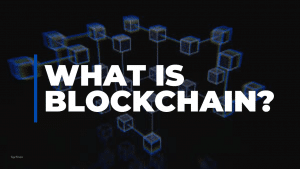Post Views: 11
Key Takeaways
- Cross-chain bridges, or blockchain bridges, connect different blockchains, allowing users to transfer digital assets and data.
- The exact mechanics vary, but bridges typically involve locking assets on one chain and issuing a corresponding representation on the other. The locked assets are released when the user transfers the representation back.
- The blockchain community is actively improving bridge security through better coding practices, regular audits, and exploring decentralized bridge designs.
Since new blockchains started popping up after the creation of Bitcoin’s blockchain in 2009, there has been a prevailing problem regarding interoperability.
What Are Blockchain Bridges?
Blockchain bridges are tools that connect different blockchain networks. They act like bridges in the physical world, allowing you to move assets and data between blockchains that are not usually compatible with each other.
Think of them as solving a communication issue. Blockchains are these isolated ecosystems, and bridges allow them to talk to each other. This is important because it unlocks much potential in the crypto world. It allows users to:
- Move assets around more freely – With bridges, you can transfer your crypto holdings between blockchains, depending on your needs. Maybe an NFT you own is on the Ethereum blockchain, but you want to use it in a game on Solana.
- Benefit from different features – Different blockchains have different strengths and weaknesses. Bridges allow you to leverage each one’s unique features. For example, you could move your funds to a blockchain with faster transaction speeds or lower fees.
How Do They Work?
Let’s consider Mae, who has her assets in Ethereum but wants to use a lending and borrowing platform in Solana. Mae would need to transfer her ETH to Solana through a blockchain bridge.
The bridge then locks her Ethereum on the Ethereum network and mints new tokens that can be used on Solana.
When Mae wants her original ETH back, she can burn her Solana-compatible ETH to release her locked ETH on the Ethereum network.
Now that you have the complete picture of the process, you may have noticed that the ETH is actually not moving. Instead, it gets locked, and you can access a similar amount compatible with another chain.
Advantages
Cheaper + Faster Transaction Fees
Let’s say you have ETH on the Ethereum network, which has flaws like high transaction fees and slow throughputs.
You could move your assets through a bridge to Polygon, which would be much faster and cheaper.
By moving your ETH to Polygon, you can save money by trading tokens for a fraction of the cost you would incur on the Ethereum network.
Explore Other Blockchain Ecosystems
This allows you to enjoy products like decentralized applications that only exist on other blockchains.
For example, DeFi protocols may only be available on a specific blockchain and support a wrapped version of ETH. If you find interest rates or products offered in the protocol appealing, you may decide to port your ETH through a bridge to enjoy the benefits provided by that protocol.
This could also be the case for protocols on multiple blockchains like the popular lending protocol Aave. For example, if you have been using Aave on Ethereum to lend USDC, but the interest for the same coin on Polygon is higher, you may move your assets to Polygon and take advantage of the higher interest there.
Scalability
Like users, developers who create products on the Ethereum network have had negative experiences due to the network’s fees and slowness. You might be wondering, “Why did they choose to build there in the first place?”
Since Ethereum has been there longer than its competitors, there is a factor of network effect. This is when a product becomes more valuable when more people use it. If many people use it, there comes liquidity, which measures how easy it is to convert one asset to another.
But now, with blockchain bridges, developers don’t have to trade off these important benefits for speed and lower transaction costs by building on a different chain. Users can quickly move their assets from the original chain to other blockchains, where the same tokens can be processed faster and at a lower cost.
Types Of Bridges
Centralized (Trust-Based)
As the name suggests, you are essentially trusting your crypto in the hands of a centralized entity. You must give up control of your assets as they act as third parties verifying transactions and converting your coins into another cryptocurrency.
An example of this is Wrapped Bitcoin (WBTC), a product of a centralized entity that takes BTC and wraps it in an ERC-20 contract to make it function like an Ethereum token.
The advantage of using trust-based bridges is that they are cheaper and quicker.
Decentralized (Trustless)
Trustless-based bridges operate on algorithms, removing the need for a third party. Like blockchain, They are decentralized, with individual networks contributing to transaction validation.
However, being decentralized has its own flaws; one of them is that the service may be freelance-based. The validators are paid to process only your transaction. So, if there is a problem, they may be unable to help you.
Are Blockchain Bridges Safe?
Blockchain bridges are not necessarily safe. In fact, they have been the prime target for hackers in recent years, with hacks resulting in billions of dollars in stolen cryptocurrency.
One of the most significant bridge hacks to date was the Ronin bridge hack in March 2022. Ronin is a bridge for the popular play-to-earn game Axie Infinity. Hackers stole over $600 million worth of cryptocurrency from the bridge, disrupting the game’s economy.
However, we can expect advancements in these areas to lead to more secure and reliable cross-chain bridges in the next few years.
Final Thoughts
The main idea of these systems is that bridges rely on several different validator nodes to reach a consensus on the accuracy of the distributed information. Allowing different terms and blockchain protocols in the space to work together will fuel innovation, which will, in turn, accelerate user adoption.
Via: 2Usethebitcoin.com










